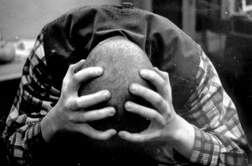Toxicomania: signs, treatment and consequences for the body
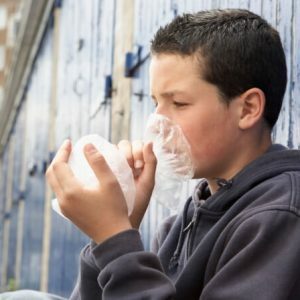 Toxicomania refers to the abuse of chemicals not included in the official list of drugs, which manifests itself in the development of dependence on them.Toxicomania is prevalent mainly among adolescents.
Toxicomania refers to the abuse of chemicals not included in the official list of drugs, which manifests itself in the development of dependence on them.Toxicomania is prevalent mainly among adolescents.
Varieties of substance abuse
The first cases of substance abuse arose in the USA in the 60s of the XX century.At that time, reports were reported that young people use volatile substances( gasoline, thinner, paints, acetone) to get the effect of drug intoxication.Already in the 70 years of substance abuse leaked into the Soviet Union.But the greatest extent in the post-Soviet countries the problem reached already in the 90s.This wave took the lives of many young guys.
Toxicomania is a dependence not only on volatile substances, but also on drugs. In general, these types of substance abuse are distinguished:
- Toxicomania caused by the inhalation of volatile substances( inhalants);
- Substance abuse caused by abuse of psychoactive drugs:
- Abuse of sleeping pills and sedatives;
- Cholinolytics abuse.
What is the difference between substance abuse and addiction?From a medical point of view, these concepts are almost identical. Toxicomania, as well as drug addiction, manifests a pathological attraction to the substance, dependence on it, the development of the withdrawal syndrome with abstinence from substance use.
Differences between these concepts are defined by legal aspects.Substances used by toxicants are not listed in the state drug list .We use gasoline, paint and varnish materials, medicines in our lives for their intended purpose and prohibit their realization completely impossible.These substances are absolutely accessible, they are sold in stores, their storage is not prosecuted by law.All these aspects are in the hands of adolescents who, in pursuit of new experiences, begin to experiment with various substances.
Signs of substance abuse
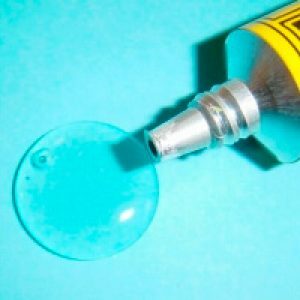 Toxicomania is common mainly among adolescents and especially in children from disadvantaged families.As a rule, the use of psychoactive substances of young people is encouraged by curiosity, as well as the desire to imitate the authorities.First, dangerous substances are used in companies, then the patient seeks to consume substances alone.
Toxicomania is common mainly among adolescents and especially in children from disadvantaged families.As a rule, the use of psychoactive substances of young people is encouraged by curiosity, as well as the desire to imitate the authorities.First, dangerous substances are used in companies, then the patient seeks to consume substances alone.
The use of prohibited substances for substance abuse is limited. To achieve a drug effect, psychoactive drugs are consumed in large quantities.Volatile substances are inhaled by .As a rule, the substance is impregnated with a cotton cloth, applied to the nose and breathes it.Or pour the substance into a cellophane bag, put it to the mouth and nose, breathing in the vapors.The most dangerous way is to put the package on your head.It is not uncommon for a person to die with a packet on his head, due to the fact that in a state of intoxication he did not have time to remove it from himself.
Narcotic intoxication occurs only a few seconds after the inhalation of inhalants. Acute intoxication with various substances has its clinical features.
Toxicomania with glue
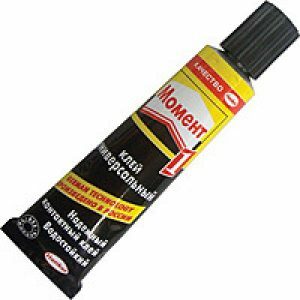 In the Soviet Union, the glue "Moment" became a real attribute of drug addicts.The additive effect of the adhesive was due to the inclusion of in toluene.However, as the substance abuse "Momentum" was gaining enormous proportions, the reputation of the manufacturer was spoiled.Therefore, at the end of the 90s, toluene was excluded from the adhesive, after which toxicomans lost interest in it.
In the Soviet Union, the glue "Moment" became a real attribute of drug addicts.The additive effect of the adhesive was due to the inclusion of in toluene.However, as the substance abuse "Momentum" was gaining enormous proportions, the reputation of the manufacturer was spoiled.Therefore, at the end of the 90s, toluene was excluded from the adhesive, after which toxicomans lost interest in it.
When inhalation of the glue, first of all there is noise in the head, dizziness, double vision, palpitations, sore throat, the saliva and lacrimation of intensify.Soon there is euphoria.When the inhalation of fumes continues, hallucinations occur.And it is characteristic that hallucinations from the words of toxic addicts resemble "cartoons".Before the eyes of the dependent, images of people arise, whole subjects are unfolding, actions, as a rule, of entertainment character.In this case, the toxicoman himself observes all these from the side, like a spectator, and does not get involved in the plot. A patient can control hallucinations, which is why their contents change.Themselves are called toxic addicts "order cartoons."
During narcotic intoxication, speech in a person becomes indistinct, movements are discordant.From the side the teenager looks deafened, his eyelids are half-empty, his face is frozen with a smile.The patient does not react to the appeal to him.
After stopping the inhalation of the glue, hallucinations soon disappear.The patient begins to feel a pronounced weakness, nausea, headaches, a specific taste in the mouth. Vomiting, palpitations may also occur.These symptoms can persecute the patient a few more days.
Gasoline toxicity
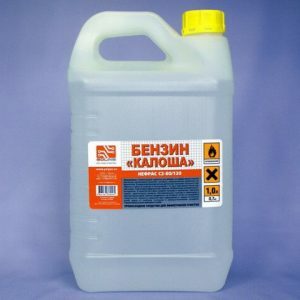 Drug intoxication caused by inhalation of petrol vapors is due to the constituents of toluene, benzene, xylene .Intoxication begins with a sensation of perspiration in the nose and throat, coughing, redness of the face and eyes, rapid heartbeat, impaired coordination of movement.All this is the protective reaction of the body to poisoning.But this does not stop the person and he takes the next breath.
Drug intoxication caused by inhalation of petrol vapors is due to the constituents of toluene, benzene, xylene .Intoxication begins with a sensation of perspiration in the nose and throat, coughing, redness of the face and eyes, rapid heartbeat, impaired coordination of movement.All this is the protective reaction of the body to poisoning.But this does not stop the person and he takes the next breath.
Now there is euphoria, a sense of some dope, a slight "pleasant" dizziness.With the continuation of inhalation, a delirious disorder develops with visual and auditory hallucinations.This change of consciousness is accompanied by a sense of fear, but also curiosity.When gasoline is toxic, a person is not able to "order hallucinations," as is the case with inhaling other inhalants.At the initial stage of delirium, the patient remains critical of everything that is happening.However, soon hallucinations are perceived realistically, and therefore a person can escape somewhere, defend himself from his pursuers, etc.
With the cessation of gasoline inhalation, consciousness begins to partially recover.Therefore, substance abuse is not accompanied by aggressive actions of the patient, attacking people, jumping out of windows, etc. It is much more realistic to burn a potential danger, for example, when trying to smoke, as teenagers forget to wash their hands and face of gasoline.
After the termination of inhalations after 10-30 minutes, the consciousness clears up.Hallucinations completely disappear, but they are replaced by deafness.A person feels weak, weak, and his headaches worry him.
Dependence development
The episodic use of inhalants lasts an average of 1-5 months.Gradually, a mental dependence is formed, one of the signs of which can be considered the transition to a single use of chemicals .There is also an increase in tolerance, to achieve the former effect, the patient lengthens the duration of inhalation and repeats it several times a day.In breaks between inhalations of the patient excruciate irritability, thoughts about the desired substance.
Regular and prolonged use of chemicals soon leads to the formation of physical dependence .Abstinence from inhalations is manifested by the most real abstinence syndrome, characterized by an angry mood, insomnia, loss of appetite, muscle tremor and even muscle cramps.At this stage the addict is no longer able to quit, "tie" with the use of poisonous substances.
Consequences of substance abuse
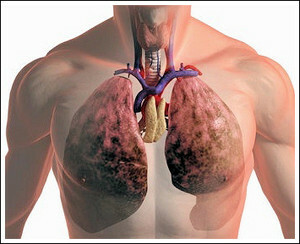 With regular use of inhalants for a few months develops a toxic brain damage - encephalopathy .As a result, the adolescent's agility, speed of reaction worsens.The new material is difficult to remember, the level of intelligence is progressively reduced, which causes problems with learning. Adolescents become passive, inactive, they can spend whole days lying aimlessly on the bed, distracted only by the use of inhalants. In other cases, adolescents on the contrary become aggressive, pugnacious, because of which there are always conflict situations.They usually drop out of school, run away from home.
With regular use of inhalants for a few months develops a toxic brain damage - encephalopathy .As a result, the adolescent's agility, speed of reaction worsens.The new material is difficult to remember, the level of intelligence is progressively reduced, which causes problems with learning. Adolescents become passive, inactive, they can spend whole days lying aimlessly on the bed, distracted only by the use of inhalants. In other cases, adolescents on the contrary become aggressive, pugnacious, because of which there are always conflict situations.They usually drop out of school, run away from home.
Often addicted disturb headaches, dizziness, insomnia.The gait becomes shaky, the movements are fuzzy by the .Muscle tremors, spontaneous nystagmus are also noted.All these mental and neurological disorders are provoked by the toxic effects of inhalants.But it is worth noting that these violations are very persistent and do not disappear completely even against the backdrop of the rejection of inhalants.But with substance abuse, not only the nervous system suffers. Inevitably affects the organs of vision and respiration, kidneys, liver.
Principles of treatment
Toxicomania is rarely found in adults.Teenagers who use inhalants, or in the end, still stop using them, or switch to alcohol, drugs. It is impossible to ignore substance abuse, because dependence can inflict heavy damage on a child's life.
At the initial stages of substance abuse, individual psychotherapy with outpatient is performed.When the illness is neglected, the adolescent is placed in a narcological clinic where detoxification is carried out, as well as medical treatment aimed at restoring the work of the brain.The basis of treatment remains psychotherapy, which helps the child correctly prioritize life and define important goals for himself.
Grigorova Valeria, medical reviewer


